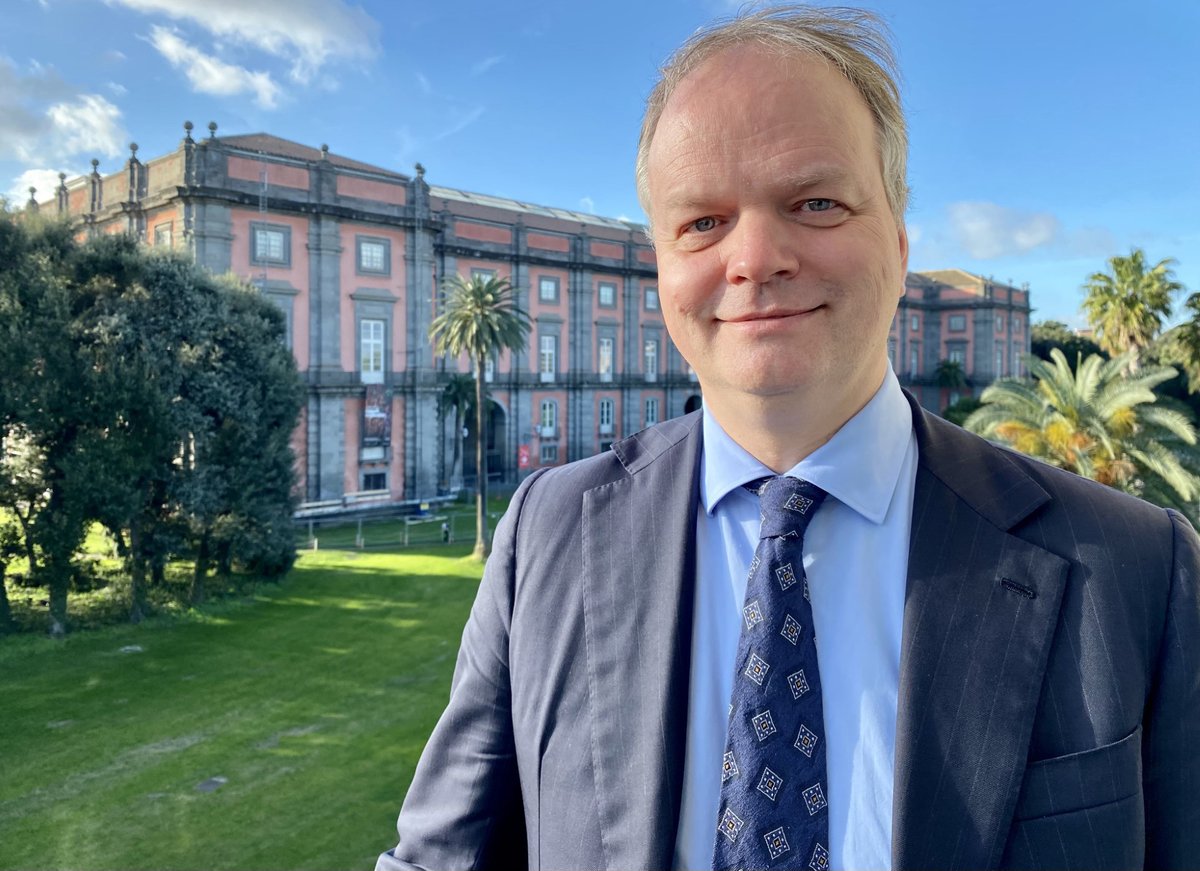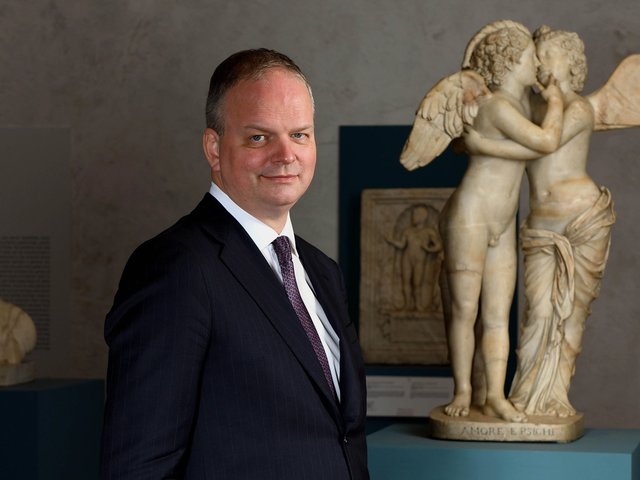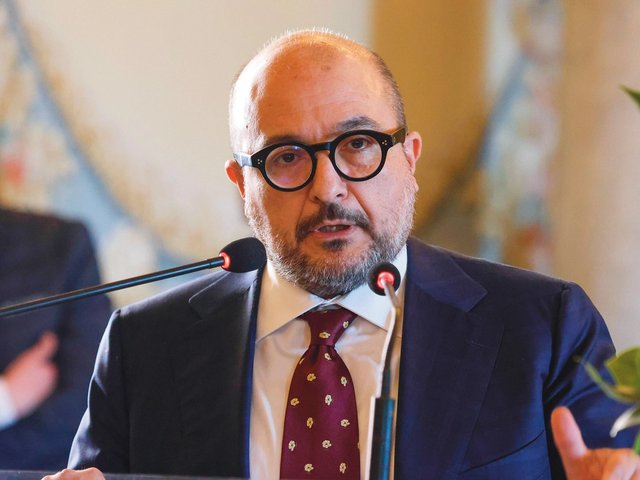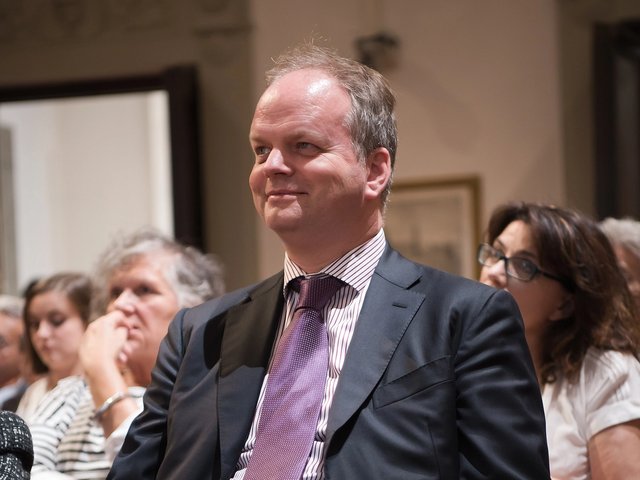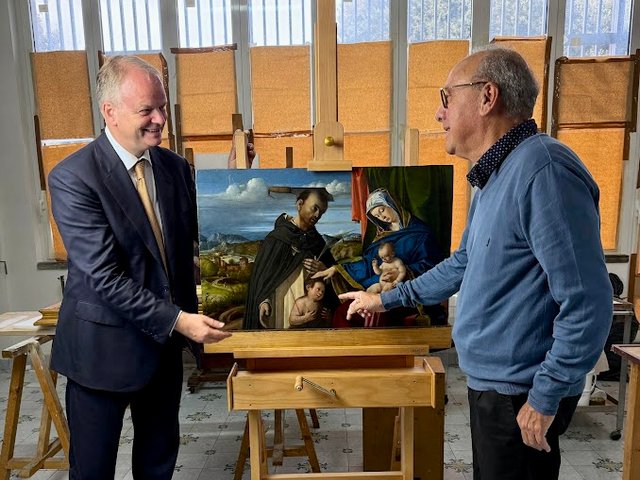Eike Schmidt has no regrets. For the past decade, Schmidt, now 57, has been one of the world’s most conspicuous—and most unpredictable—museum directors. After taking over and completely restructuring Florence’s Uffizi Galleries in 2015, he planned to leave in 2019 to take over Vienna’s Kunsthistorisches Museum, changing his mind at the last minute to stay on at the Uffizi. Then in 2024, a matter of months after taking over the Museo di Capodimonte in Naples, the German-born Schmidt decided to run for mayor of Florence, only settling down into his new museum director post after losing.
Schmidt regards these controversies, which made headlines far beyond the rarefied world of Europe’s dynastic art collections, with remarkable aplomb, setting his sights instead on the future of his new institution, southern Italy’s premier Old Masters collection, which sits atop a region in crisis.
Born into a professional family in Freiburg im Breisgau in southwest Germany, Schmidt, who is married to the Italian art historian Roberta Bartoli, has been living in Italy on and off since the mid-1990s, finally taking Italian citizenship in the period leading up to his mayoral candidacy. He now regards his 2019 choice to back out of the Vienna directorship, citing at the time his deep affinity with Florence, as “definitely the right decision”. As it worked out, he says, he would have started a few months before the Covid-19 pandemic, imperilling the Kunsthistorisches Museum through his lack of insider experience there, and leaving the Uffizi without a knowledgeable director to handle the crisis back in Florence. Matti Bunzl, the director of the Wien Museum since 2015, recalls the episode as “odd”, even if “scandal is not quite the right word”.
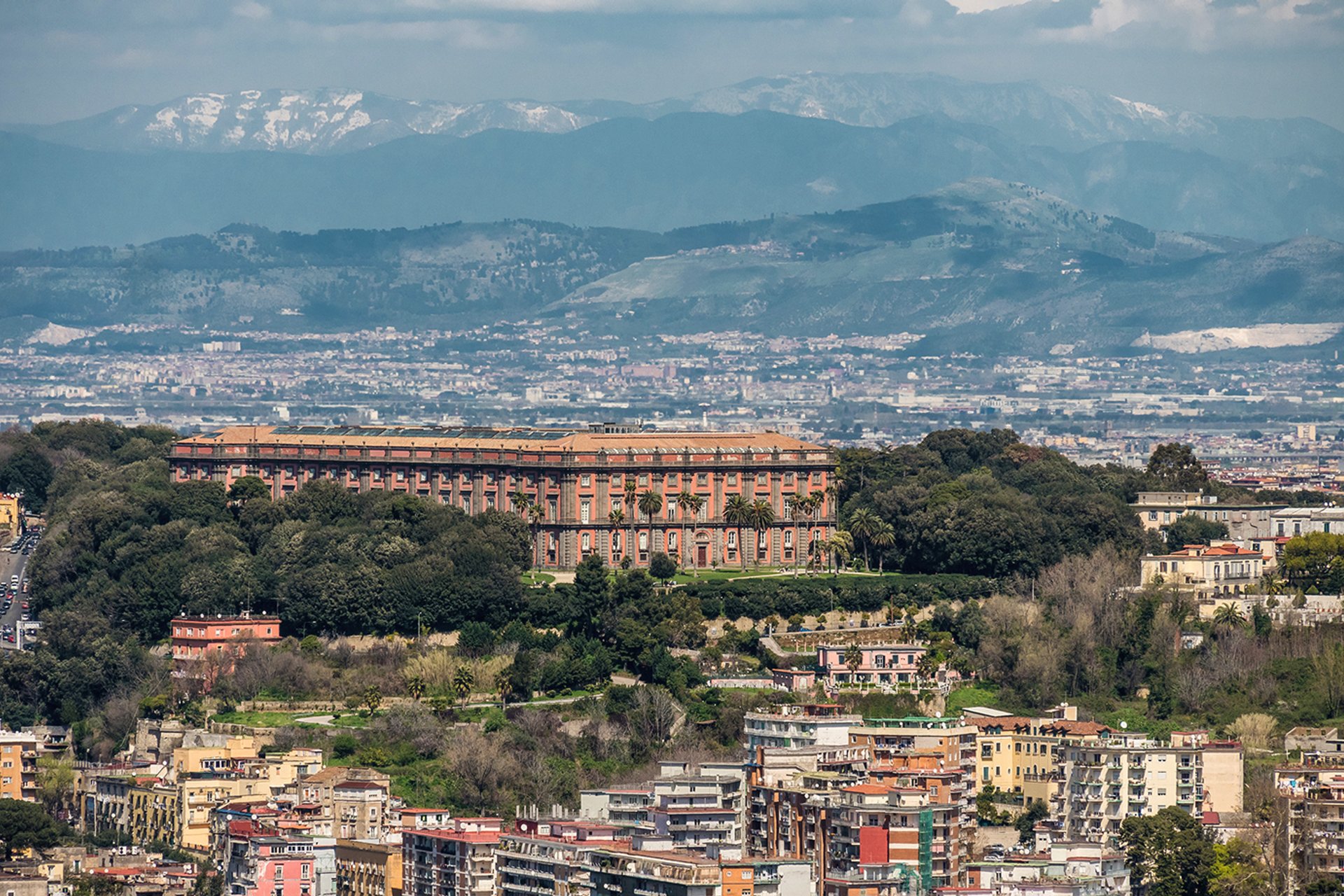
The Museo di Capodimonte and its surrounding park are located on the grounds of a former royal palace in Naples Armando Iozzi
Five years later, when Schmidt decided to run for mayor—drafted, as he likes to say, by Florentines who would stop him on the street to praise his management skills—friends and colleagues were baffled. “I was surprised,” says his long-time friend Tom Rassieur, a curator at the Minneapolis Institute of Art (MIA), where Schmidt was a sculpture and decorative arts curator and department head before arriving at the Uffizi. Schmidt nominally ran as a centre-right independent, but with the backing of right and far-right factions, including Brothers of Italy, the prime minister Giorgia Meloni’s populist party, and Lega, associated with the Eurosceptic Matteo Salvini. He made it into the run-off but lost to the centre-left politician Sara Funaro. “I would not do anything differently,” he now says, proud of his better-than-expected performance.
Initially drawn to Renaissance sculpture, with a particular interest in works in ivory, he interrupted his scholarly and curatorial path with a year-long stint in the art market, serving as the director of European sculpture at Sotheby’s London just before arriving in Minneapolis in 2009. That his six years at MIA—a distinguished but regional museum—led to the directorship of the world-class Uffizi remains a confounding leap. Schmidt’s 2015 appointment, along with those of several other non-Italians to key directorships, was part of a dramatic change in the way Italy’s national museums were administered as the then centre-left government attempted to reform sclerotic cultural institutions.
Schmidt’s tenure at the Uffizi was marked early on by organisational prowess. Soon after arriving, he combined the original Uffizi and its great repository of Renaissance masterpieces with the massive Palazzo Pitti across the Arno, housing until then nine separate collections. The newly configured Uffizi also came to include the Pitti’s adjacent Boboli Gardens and the Vasari Corridor, connecting the Uffizi with the Pitti by snaking its way across the Ponte Vecchio.
Financially, Schmidt’s tenure was a dramatic success. “When I arrived, the Uffizi made half its operating costs,” he says. “When I left, we made double.” To his credit—and some argue, his detriment—attendance figures soared. The Uffizi Galleries now has joint attendance of more than 5.2 million visitors—almost double of what they had in 2019. Between 2014 and 2024, attendance at the Uffizi proper increased from just under two million to nearly three million.
In the Uffizi Gallery itself, Schmidt oversaw the rehang—and selective but dramatic reframing—of much of the collection. Michelangelo’s lone panel painting, the Doni Tondo (1505-06), and Botticelli’s La Primavera (around 1480), along with the Leonardos, are now recessed inside walls behind anti-reflective glass, and much of the permanent collection was grouped together in new ways.
Responses to these changes have been mixed. The American art historian and critic Cammy Brothers thinks the effect has been to “draw more attention to certain marquee pieces”, resulting in a “decontextualisation as opposed to an understanding”. By contrast, the Florence-based American art historian Bruce Edelstein—who, like Brothers, has been going to the Uffizi regularly for decades—appreciates the new arrangement. “Those displays have enormously improved the ability of larger crowds to view works of art,” he says.
Eike Schmidt brought the museum [Uffizi Gallery] into the 21st centuryBruce Edelstein, art historian
As a way to win more attention and visitors to the Uffizi, Schmidt expensively relaunched the website, brought in influencers, and even posed for some comical publicity shots himself. Edelstein maintains that Schmidt “brought the museum into the 21st century”, while Brothers laments that the museum is overcrowded.
One of Schmidt’s harshest critics, the Florentine art historian Tomaso Montanari, who was himself put forth in the press as a centre-left option for mayor, decries Schmidt’s use of influencers and a certain “franchising” of the “Uffizi brand”—“something that would make sense in the US, not in Tuscany,” he says.
Montanari, now a professor and rector at Università per Stranieri di Siena, also bemoans Schmidt’s promotion of “blockbuster exhibitions”, which he believes came at the expense of deeper research into the collections. By contrast, the curator Carl Strehlke, another American resident of Florence, effusively praises an often undervalued aspect of Schmidt’s tenure: the amassing of new works. “His acquisitions for the Uffizi were very important,” Strehlke says, citing works by the likes of the Trecento Florentine painter Giovanni da Milano and the Romantic Francesco Hayez.
Schmidt’s move to chaotic Naples—a short train ride, but a world away, from quaint, orderly Florence—is less surprising than it seems. He had applied for the job in 2015, along with the directorship of the Uffizi, and he regards his position there as “the fulfilment of a dream”. He has arrived at a tough time for the city’s cultural scene, with many important museums perennially leaderless.
The Capodimonte, like the Uffizi, has a collection that spans from the Middle Ages to the present day. But unlike the Uffizi, it seems like an undiscovered treasure. Though unquestionably one of Italy’s most important museums—with key works by artists as diverse as Simone Martini, Pieter Brueghel the Elder, Titian, Caravaggio and Andy Warhol—it has a fraction of the crowds. Last year, it had just under 160,000 visitors.
Once the grand hunting residence of Naples’s Bourbon kings, the museum building is surrounded by a sprawling park popular with locals, making it seem more like an architectural folly than an attraction in its own right. “This is one of the greatest art collections of the world, but hardly anyone knows about it,” Schmidt says, adding "Not even in Naples.”
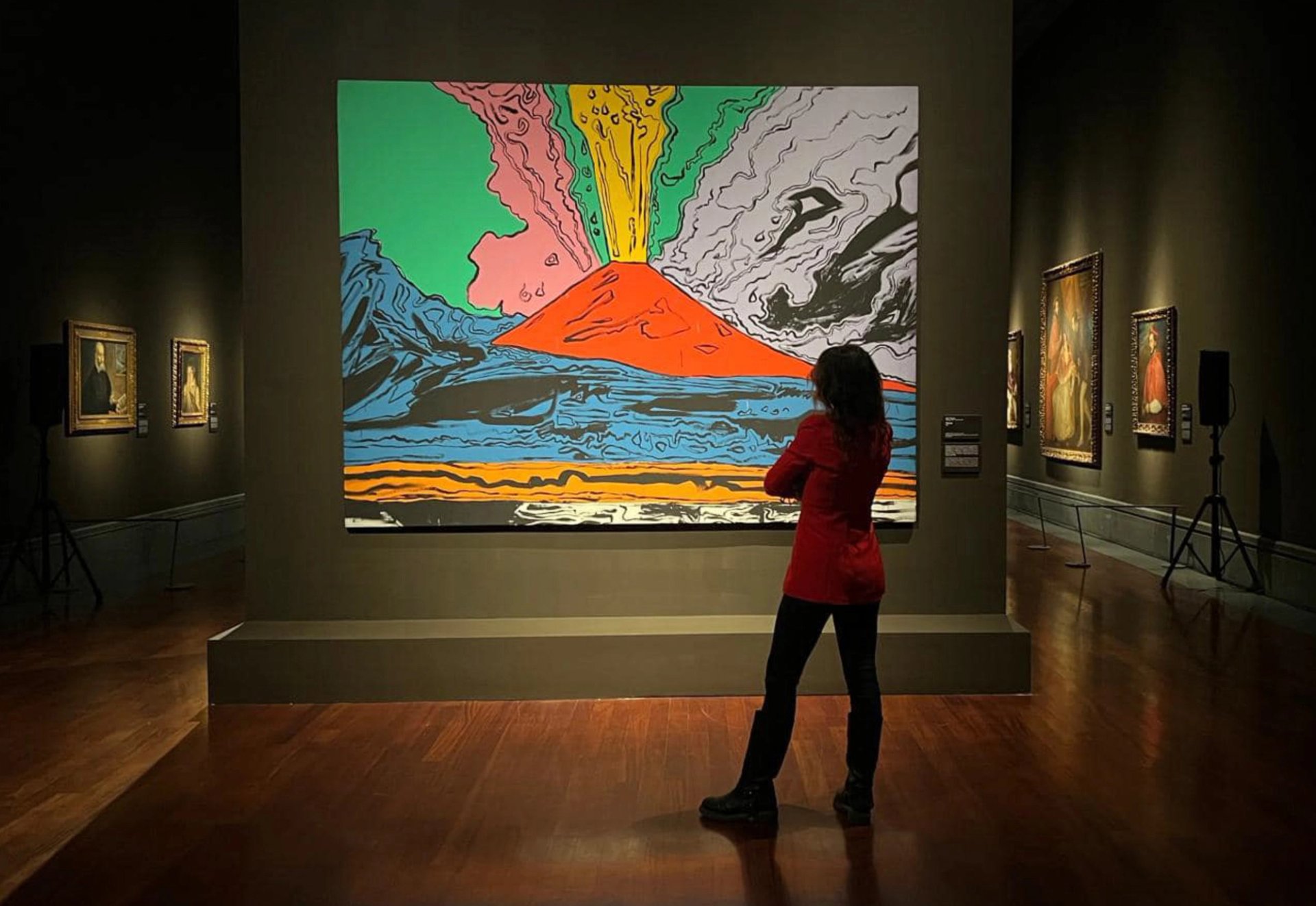
Schmidt has created a provocative grouping at the Museo di Capodimonte, with Andy Warhol’s Vesuvius (1985) alongside works by Titian and Artemisia Gentileschi © 2025 The Andy Warhol Foundation for the Visual Arts, Inc/Licensed by DACS, London, 2025; Courtesy Museo e Real Bosco di Capodimonte
At the museum itself, Schmidt has already left his mark. In an upgraded second-floor gallery, he has brought together around 20 highlights of the collection, including Titian’s splendid portrait of Pope Paul III and Artemisia Gentileschi’s dramatic Judith Slaying Holofernes (around 1620). Provocatively, he has placed them with Warhol’s Vesuvius (1985).
Bringing in more visitors is part of Schmidt’s plan to increase revenue—now a paltry 5% of operating costs, he says—but his presiding goal is to reimagine the collection. He is bringing out of storage ignored works by women artists, planning new ways to draw attention to under appreciated Neapolitan Baroque painters, acquiring new work and expanding outreach to school children in Naples and the surrounding Campania region.
For now, he seems less interested in attracting the city’s pizza-minded tourists, who rarely make their way up the hill to the Capodimonte from the historic centre, or in finding a new round of influencers to promote the museum. Schmidt’s tenure in Naples may consequently be celebrity-shy compared with Florence, but he does have an exception in mind: Italy’s top-ranked tennis player—and recent Wimbledon winner—Jannik Sinner, who has a wide youth following here. “He resonates with the kids,” Schmidt explains.


